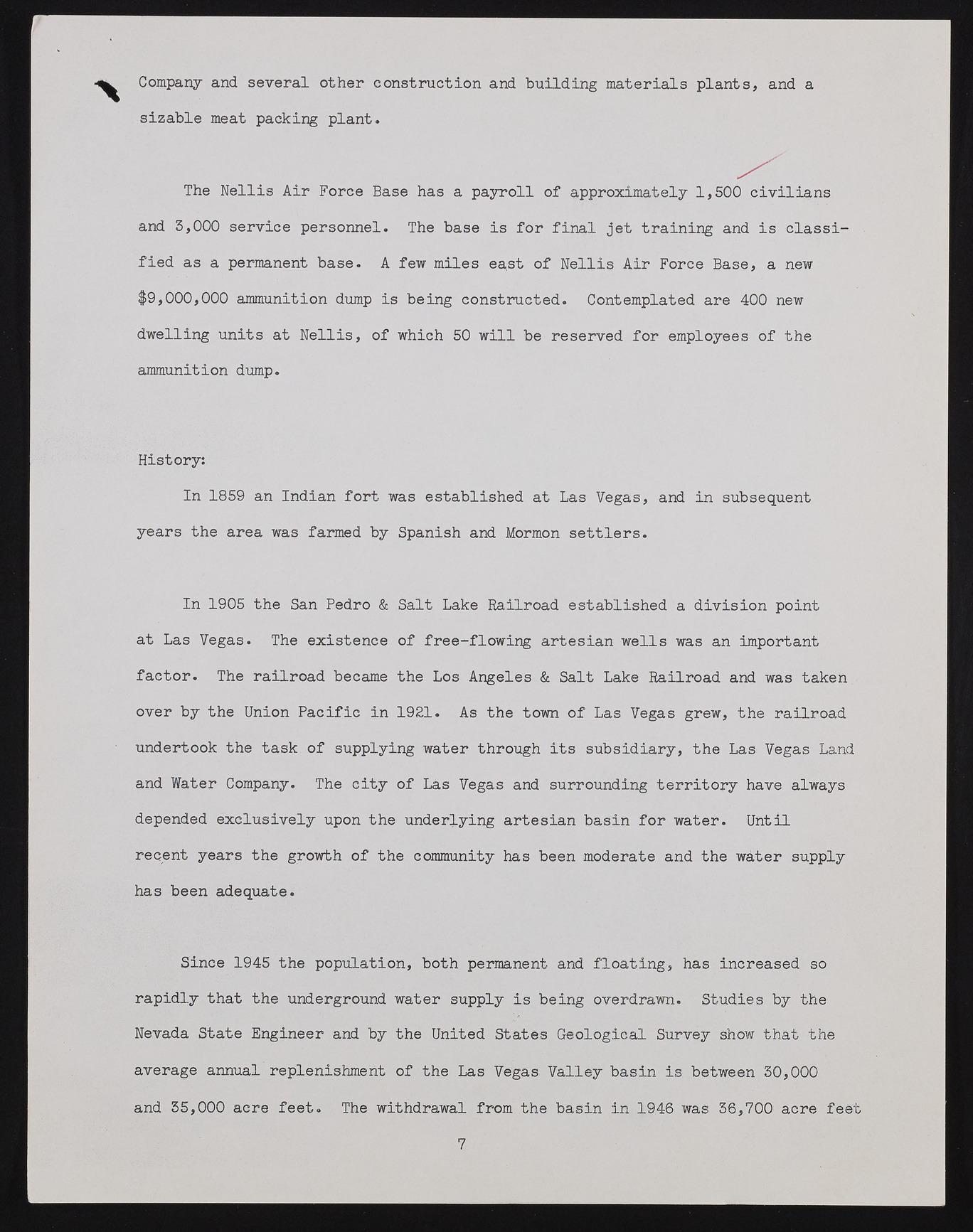Copyright & Fair-use Agreement
UNLV Special Collections provides copies of materials to facilitate private study, scholarship, or research. Material not in the public domain may be used according to fair use of copyrighted materials as defined by copyright law. Please cite us.
Please note that UNLV may not own the copyright to these materials and cannot provide permission to publish or distribute materials when UNLV is not the copyright holder. The user is solely responsible for determining the copyright status of materials and obtaining permission to use material from the copyright holder and for determining whether any permissions relating to any other rights are necessary for the intended use, and for obtaining all required permissions beyond that allowed by fair use.
Read more about our reproduction and use policy.
I agree.Information
Digital ID
Permalink
Details
More Info
Rights
Digital Provenance
Publisher
Transcription
Company and several other construction and building materials plants, and a sizable meat packing plant. The Nellis Air Force Base has a payroll of approximately 1,500 civilians and 3,000 service personnel. The base is for final jet training and is classified as a permanent base. A few miles east of Nellis Air Force Base, a new $9,000,000 ammunition dump is being constructed. Contemplated are 400 new dwelling units at Nellis, of which 50 will be reserved for employees of the ammunition dump. In 1859 an Indian fort was established at Las Vegas, and in subsequent years the area was farmed by Spanish and Mormon settlers. In 1905 the San Pedro & Salt Lake Railroad established a division point at Las Vegas. The existence of free-flowing artesian wells was an important factor. The railroad became the Los Angeles & Salt Lake Railroad and was taken over by the Union Pacific in 1921. As the town of Las Vegas grew, the railroad undertook the task of supplying water through its subsidiary, the Las Vegas Land and Water Company. The city of Las Vegas and surrounding territory have always depended exclusively upon the underlying artesian basin for water. Until recent years the growth of the community has been moderate and the water supply has been adequate. Since 1945 the population, both permanent and floating, has increased so rapidly that the underground water supply is being overdrawn. Studies by the Nevada State Engineer and by the United States Geological Survey show that the average annual replenishment of the Las Vegas Valley basin is between 30,000 and 35,000 acre feet. The withdrawal from the basin in 1946 was 36,700 acre feet History: 7

